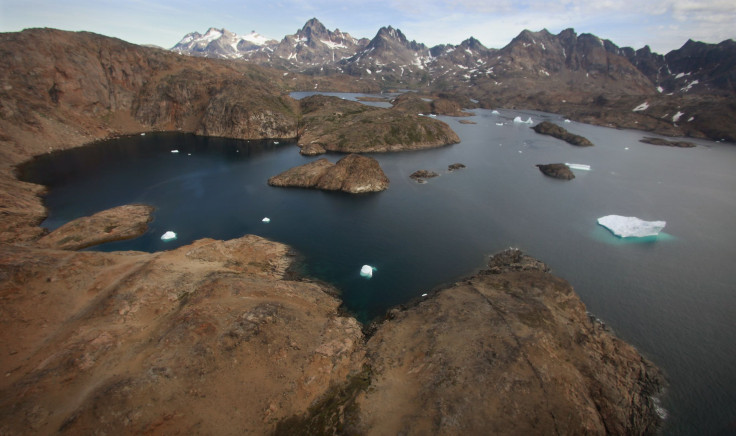Glaciers Sizzle, Squirt Bubbles When Melting To Create Loudest Marine Environment; These Sounds Could Help To Measure Ice Melt

Sizzling underwater glacial ice, as it melts into warmer sea water, creates one of the loudest natural marine environments, and the air bubbles that pop during the process could help scientists measure the rate of glacier melt and track fast-changing polar environments.
Glacial fjords -- long, narrow and deep U-shaped inlets that connect to the sea -- sizzle when warm sea water flows into them and melts the edges of glacial ice sheets, releasing air bubbles trapped inside, Erin Pettit, a researcher at the University of Alaska, said in a press release. Pettit, who often heard sputtering and popping sounds while kayaking off the Alaskan coastline, installed underwater microphones to record such sounds off the coast to detect the sounds were much louder undersea than they were above the surface.
"If you were underneath the water in a complete downpour, with the rain pounding the water, that's one of the loudest natural ocean sounds out there," Pettit said. "In glacial fjords we record that level of sound almost continually."
Although Pettit suspected the sounds to emerge from melting ice sheets, to confirm her hypothesis, she recreated the melting process in a controlled environment with the help of Kevin Lee and Preston Wilson, acoustics experts from the University of Texas.
The researchers mounted chunks of a glacier in a tank of chilled water, and recorded the video and audio of the ice as it melted and released bubbles. Sounds of the recording matched the sounds heard during the melting of glacial ice.
"Most of the sound comes from the bubbles oscillating when they're ejected," Lee said. "A bubble when it is released from a nozzle or any orifice will naturally oscillate at a frequency that's inversely proportional to the radius of the bubble," he said, meaning the smaller the bubble, the higher the pitch. The researchers recorded sounds in the 1 to 3 kilohertz range, which falls within the range of frequencies humans can hear.
Air bubbles are formed in glacial ice sheets when snow crystals trap pockets of air and then get slowly buried under more snow and gradually turn into ice, pressurizing the air bubbles. These bubbles are evenly distributed throughout the ice, and get released with a din when the ice melts.
Researchers noted that by placing hydrophones in glacial fjords, sounds of air bubbles can be recorded, and the intensity of the sound of the bubble squirts could provide data to measure the rate of ice melt and other relative changes in the glacier-melting process.
“Because sound travels long distances underwater, recording microphones can be placed a safe distance from unstable ice sheets. The audio recordings would complement other measurements of ice melt, such as time-lapse photography and salinity readings,” researchers said, in the statement.
© Copyright IBTimes 2024. All rights reserved.






















